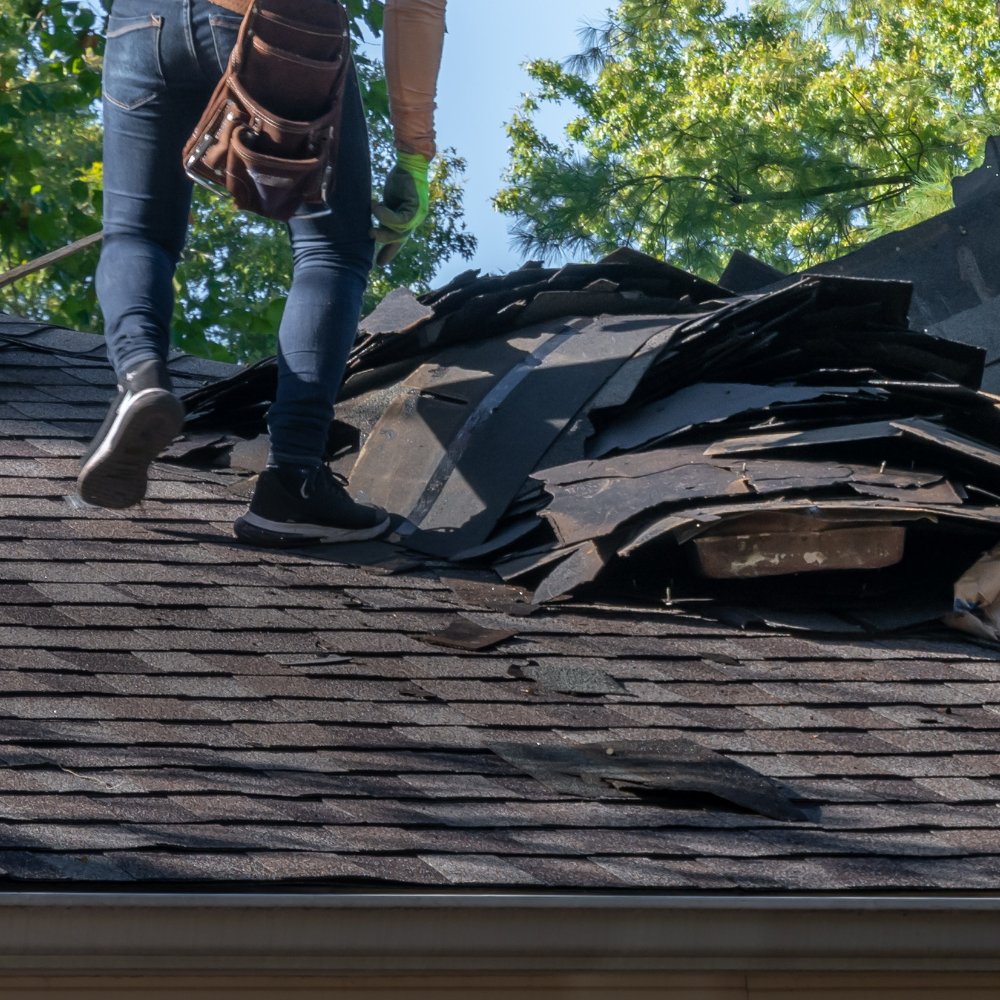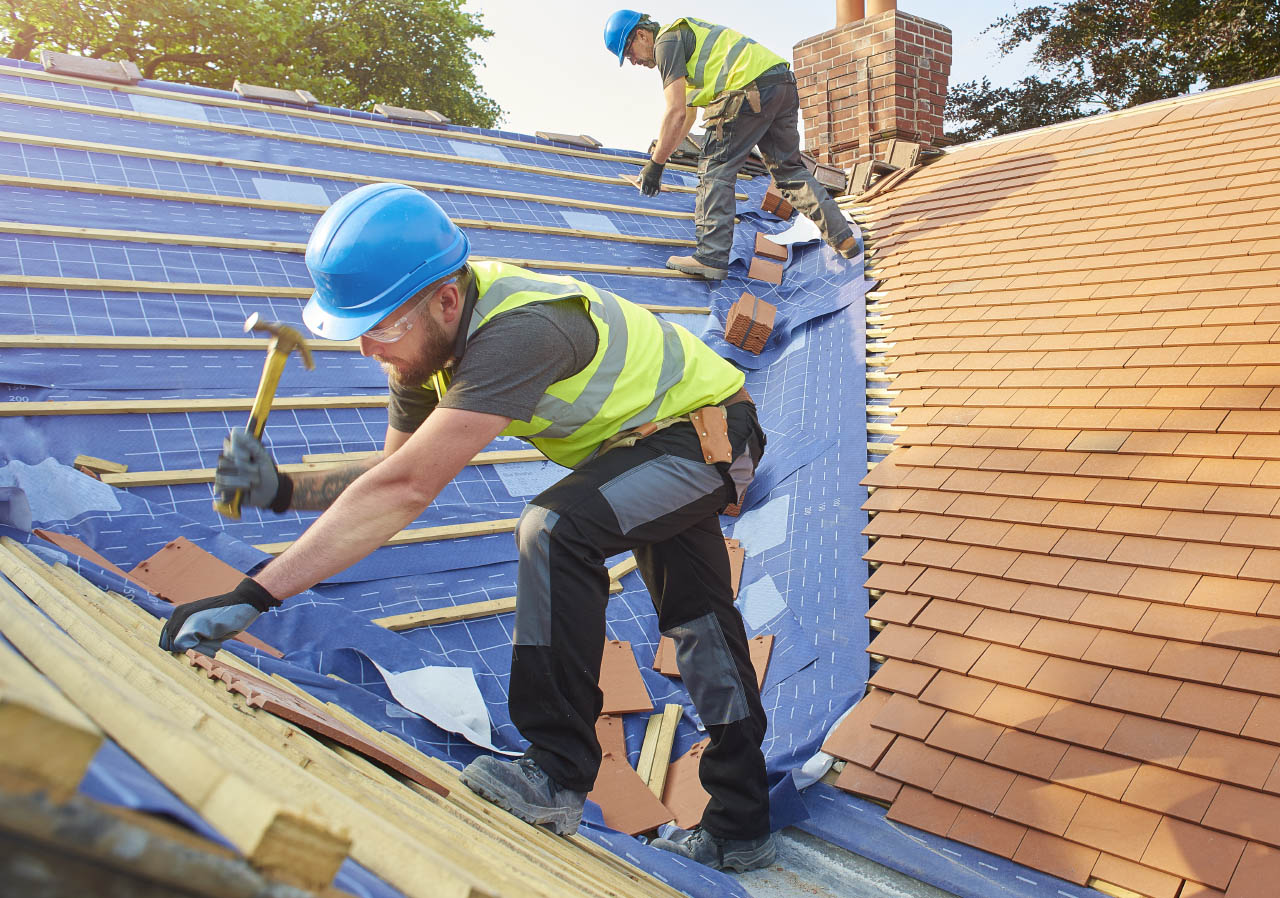Comprehending the Different Kinds Of Roof Coverings: A Comprehensive Overview for Homeowners
In the world of homeownership, picking the proper roof covering design is a choice that lugs significant ramifications for both capability and visual allure. With a selection of alternatives-- varying from the typical gable to the modern level-- each kind offers special advantages and difficulties that ought to line up with the house owner's certain needs and environmental considerations. Comprehending these differences not just aids in making an informed choice however likewise influences long-term upkeep and power performance. As we check out the ins and outs of different roofing kinds, it ends up being apparent that one dimension does not fit all; the ideal option may amaze you.
Gable Roofs
Saddleback roofs, defined by their triangular form, are among one of the most prominent roof designs due to their simpleness and effectiveness in shedding water and snow. This layout features 2 sloping sides that meet at a ridge, enabling reliable water drainage and lessening the risk of water build-up. The high pitch commonly associated with saddleback roofs enhances their capability to take care of heavy rainfall, making them appropriate for numerous environments.
Along with their functional benefits, gable roof coverings provide visual flexibility. They can be adapted to numerous architectural styles, from standard to modern-day homes. The design can also fit added attributes such as dormer windows, which enhance all-natural light and ventilation in the attic area.
In addition, saddleback roofs give sufficient area for insulation, adding to power efficiency. Homeowners can select from a selection of roofing materials, including asphalt shingles, steel, and tiles, even more improving personalization choices.
Despite their advantages, saddleback roofs might need extra assistance in areas vulnerable to high winds or hefty snowfall. On the whole, the gable roof remains a preferred option because of its blend of functionality, longevity, and visual appeal.
Flat Roofs
Level roof coverings are usually acknowledged for their minimalist design and practical applications, particularly in business and commercial setups (oahu roofing). These roofings feature a virtually straight or horizontal surface area, which enables simple building and versatile room usage. While they may lack the visual charm of pitched roofing systems, flat roof coverings supply many advantages, specifically in metropolitan settings where optimizing space is crucial
Among the primary benefits of level roofings is their ease of access. Homeowners can use the roof room for different functions, such as roof gardens, balconies, or photovoltaic panel setups. In addition, flat roofs are normally a lot more cost-effective to mount and maintain contrasted to their sloped counterparts, as they call for fewer materials and labor.
Nonetheless, level roofings do existing particular difficulties. Correct drain is important to avoid water merging, which can bring about leaks and architectural damage. For this reason, choosing top notch waterproofing products and regular assessments are critical for guaranteeing long life. Usual products used for level roof coverings include built-up roofing (BUR), customized asphalt, and single-ply membrane layers, each offering distinct benefits. Generally, level roof coverings offer as a versatile and functional choice for several property owners and organizations alike.
Hip Roofs
Hip roofs are identified by their sloped sides that merge on top, developing a ridge. This style stands out from gable roofings, as all four sides of a hip roof slope downwards towards the walls, offering a more stable framework. The angle of the inclines can vary, enabling flexibility in architectural aesthetic appeals and functionality.
One of the key benefits of hip roofings is their ability to stand up to hefty winds and unfavorable climate condition. The sloped surfaces enable much better water drainage, reducing the threat of leaks and water damages. Additionally, hip roofs supply enhanced attic room area, which can be utilized for storage and even exchanged habitable areas.
Nevertheless, constructing a hip roof covering can be a lot more complex and expensive than easier roof covering types, such as gable roofing systems. The extra material and labor associated with producing the inclines and making sure proper architectural integrity can bring about higher costs. Despite these disadvantages, many house owners favor hip roofings for their resilience, aesthetic charm, and possibility for energy performance.
Mansard Roofing Systems
Mansard roof coverings, usually recognized by their special four-sided layout, feature two slopes on each side, with the reduced slope being steeper than the upper. This architectural design, originating from France in the 17th century, is not just aesthetically appealing yet useful, as it makes best use of the usable area in the top floorings of a structure. The high reduced incline allows for more headroom, making it a suitable selection for attic rooms or lofts, which can be exchanged living areas.
Mansard roofs are click for more characterized by their flexibility, fitting different building styles, from standard to contemporary. They can be built with different materials, including asphalt address roof shingles, slate, or metal, offering property owners with a variety of choices to suit their preferences and budgets. Additionally, the layout enables the assimilation of dormer home windows, boosting all-natural light and ventilation in the top levels.
However, it is vital to consider the possible downsides. Mansard roofing systems may require even more upkeep because of the complexity of their layout, and their high slopes can be challenging for snow and rainfall overflow. Overall, mansard roofs incorporate sophistication with functionality, making them a prominent choice among homeowners looking for distinctive building features.
Dropped Roofings
As house owners increasingly look for simpleness and performance in their architectural layouts, dropped roofs have actually arised as a preferred choice. Defined by a single sloping airplane, a shed roofing system offers a minimalist visual that matches various home designs, from modern to rustic.
Among the key advantages of a shed roofing is its uncomplicated construction, which frequently equates to decrease labor and material costs. This layout enables efficient water drainage, minimizing the threat of leaks and water damage. In addition, the upright slope offers sufficient room for skylights, enhancing natural light within the interior.
Dropped roof coverings additionally offer adaptability in regards to use. They can be effectively integrated right into additions, garages, or exterior structures like sheds and pavilions. Moreover, this roof style can fit numerous roof covering products, consisting of metal, asphalt shingles, or perhaps green roofing systems, lining up with eco-friendly initiatives.
Nevertheless, it is crucial to take into consideration local environment problems, as hefty snow lots might demand changes to the roof covering's angle or framework. Generally, shed roof coverings provide a practical and visually pleasing option for homeowners looking to make the most of capability without compromising style.
Final Thought


Gable roofing systems, defined by their triangular form, are among the most prominent roof covering styles due to their simpleness and performance in shedding water and snow. oahu roofing. The steep pitch frequently linked with gable roofing systems boosts their ability to deal with heavy precipitation, making them appropriate for numerous environments
While they may lack the visual appeal of pitched roofing systems, flat roof coverings offer countless benefits, especially in metropolitan atmospheres where optimizing room is essential.
